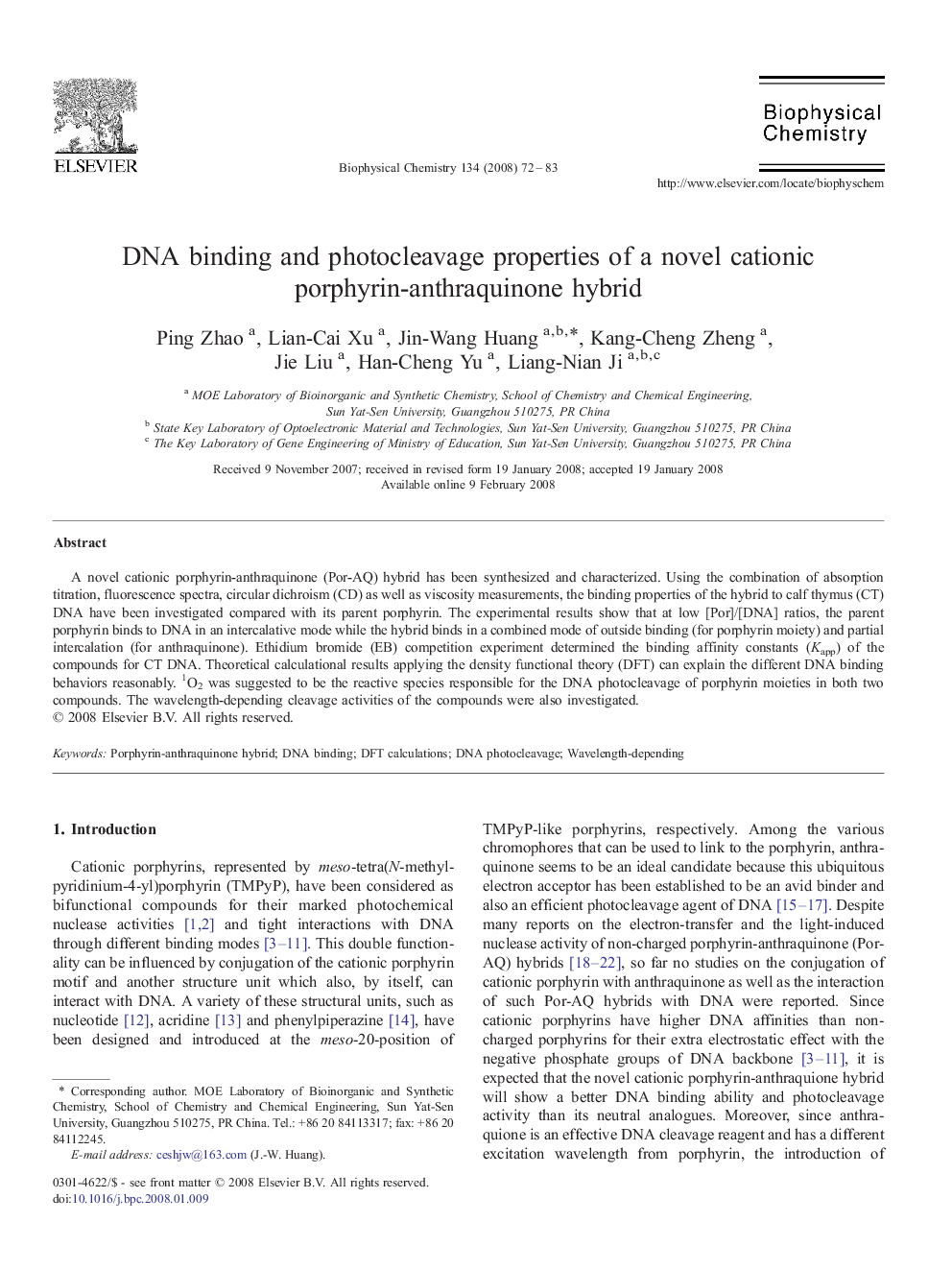| Article ID | Journal | Published Year | Pages | File Type |
|---|---|---|---|---|
| 5371973 | Biophysical Chemistry | 2008 | 12 Pages |
A novel cationic porphyrin-anthraquinone (Por-AQ) hybrid has been synthesized and characterized. Using the combination of absorption titration, fluorescence spectra, circular dichroism (CD) as well as viscosity measurements, the binding properties of the hybrid to calf thymus (CT) DNA have been investigated compared with its parent porphyrin. The experimental results show that at low [Por]/[DNA] ratios, the parent porphyrin binds to DNA in an intercalative mode while the hybrid binds in a combined mode of outside binding (for porphyrin moiety) and partial intercalation (for anthraquinone). Ethidium bromide (EB) competition experiment determined the binding affinity constants (Kapp) of the compounds for CT DNA. Theoretical calculational results applying the density functional theory (DFT) can explain the different DNA binding behaviors reasonably. 1O2 was suggested to be the reactive species responsible for the DNA photocleavage of porphyrin moieties in both two compounds. The wavelength-depending cleavage activities of the compounds were also investigated.
